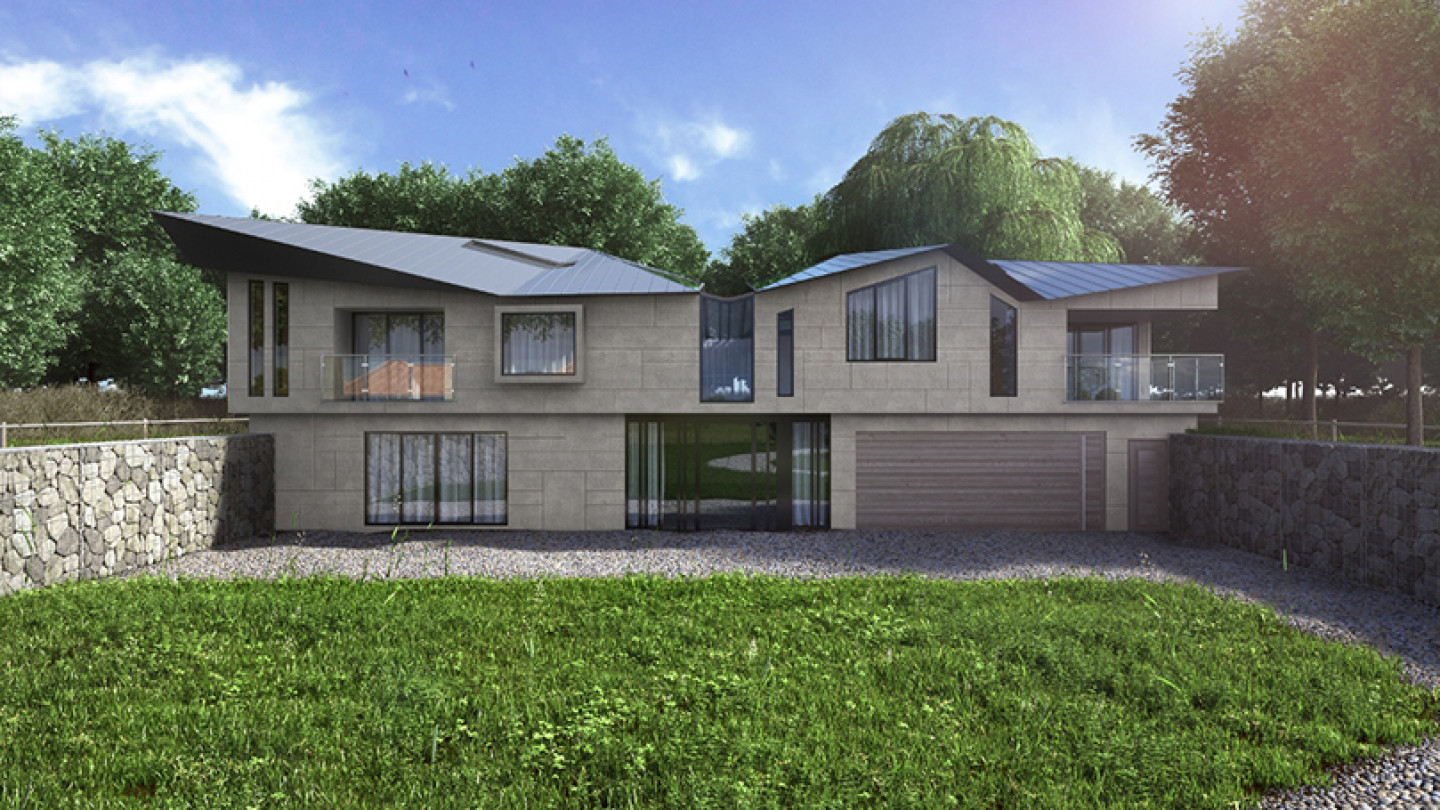A Sussex design and planning consultant and his clients are celebrating after gaining planning approval to turn a disused reservoir site into a post-modern home.
Hailsham-based Glenn Moore of Glenn Moore Associates is well known for his sustainable, striking designs and dealing with challenging planning issues.
The former reservoir is in Straight Half Mile in Maresfield and offered the site’s owners a rare opportunity to use previously developed land to construct a sustainable family home that makes an architectural statement while respecting the site’s industrial origins and setting.
Glenn explains: “I have taken the opportunity to turn a boring concrete-lined hole in the ground into an architectural form which tests boundaries in domestic architecture, will provide a focal point, and will encourage a debate about architecture.
“The technical design is based on Passiv Haus standards. The architectural design ethic pays homage to Art Deco and Bauhaus styles and the use and placement of glazing is influenced by the Modernist architectural movement. The result is a 21st century overtly modern interpretation of these influences while maintaining the agro/industrial links to the past.
“My design will certainly not be everyone’s cup of tea, but it has already received glowing support from Wealden District Council officers, has made my clients happy, and is receiving support across social media.
Formed from standing seam profiled zinc and glass, the roof is a geometric interpretation of the low rolling hills associated with the lower Sussex Weald. The walls combine ‘Viroc’, a compressed mixture of pinewood and cement, which provides visual interest to the wall cladding. Window and door frames will be dark grey aluminium and the glazing will be triple-glazed, argon-filled low E units.
Inside the home there is a combination of conventional plasterboard with natural timber, stone and ceramics. ‘ECT’ stretch ceilings and wall partitions will also be incorporated. Flooring includes timber, stone and ceramics.
The dwelling will incorporate sustainable systems such as a ground source heat pump, mechanical heat recovery and ventilation system, wet underfloor heating, rainwater harvesting and high levels of insulation and 100% LED lighting. The design of the dwelling incorporates sustainable construction techniques and is efficient in its use of energy and water resources - working towards a low carbon dwelling.
The lower floor will use the existing 60cm thick reinforced concrete walls and the floor above will be formed of 150 mm x 47 mm stud framed walls.
Glenn explains: “The Government encourages the re-use of redundant or disused buildings and outstanding or innovative architecture that helps to raise standards of design more generally in rural areas. Good design is a key aspect of sustainable development, is indivisible from good planning and should contribute positively to making places better for people.”
The site comprises a reservoir, pump house, water tank, access stairs, ramps and access road. Because of its former use, council officers agreed with Glenn Moore that the site should be considered to be brownfield land and that a new dwelling should be permitted as it would re-use a redundant structure and lead to an enhancement of the immediate setting.
Client Claudia Rich added: “I thought we would have to go for a more traditional brick and tile building but Glenn was determined to stick to his guns and get permission for the design we wanted. I am absolutely thrilled and very excited.
“I have very specific needs due to personal circumstances and Glenn managed to incorporate all of these into the design – he is absolutely amazing. Even my 92-year-old mother absolutely loves the design. I particularly like the different shaped windows and the roof. We can’t wait to start building.”
The proposed dwelling lies on the same footprint of the former reservoir buildings and the remainder of the site will become residential curtilage and will remain open and ‘green’ in character.
The lower floor of the proposal dwelling will be set into the ground, using the depth of the reservoir structure and maintaining a low profile. A single storey shallow pitched roof structure will be erected above the existing reservoir to facilitate the inclusion of in-law accommodation, garaging and storage within a single unified structure. This ensures the height of the new dwelling is not prominent in the landscape.





